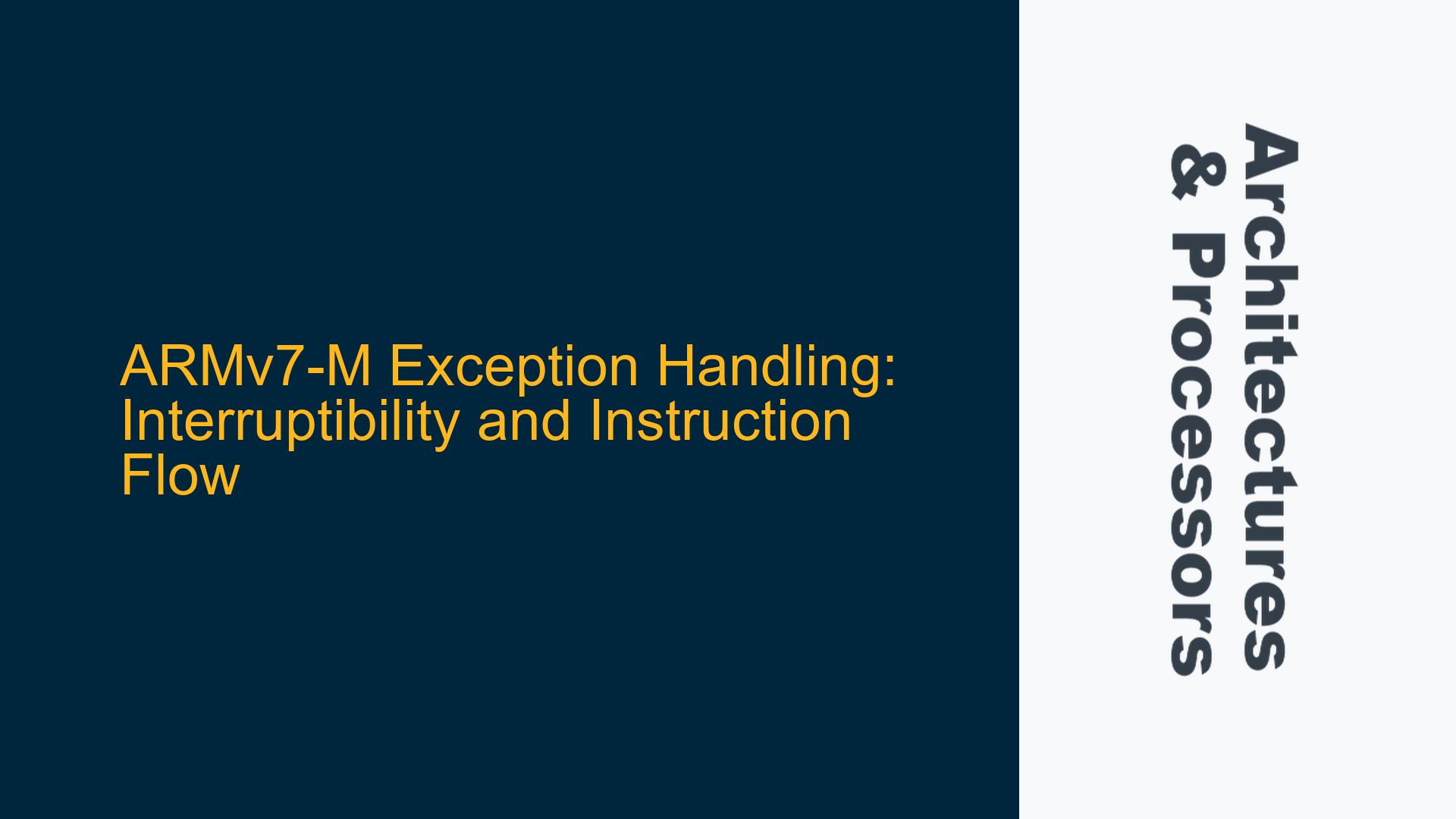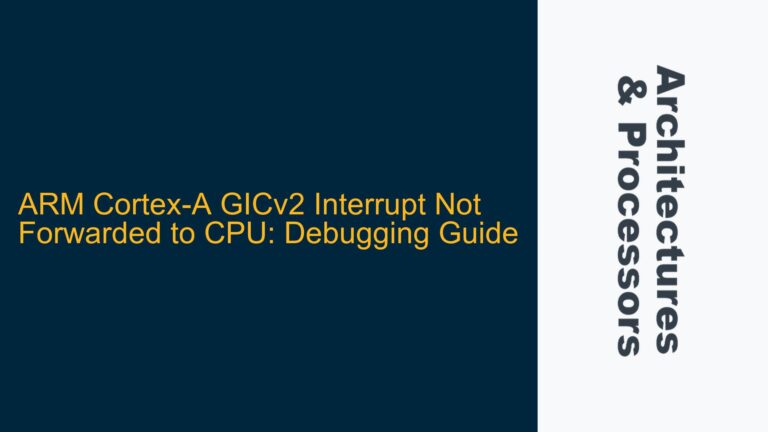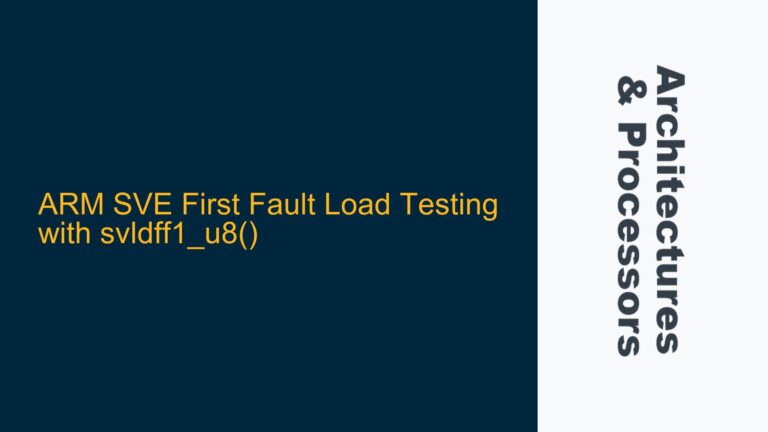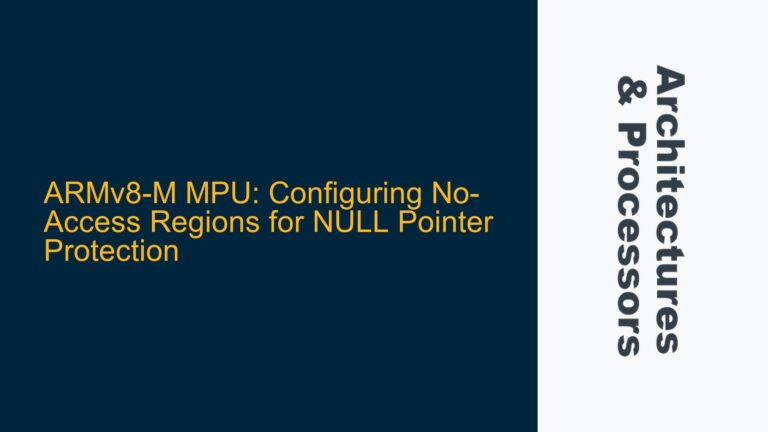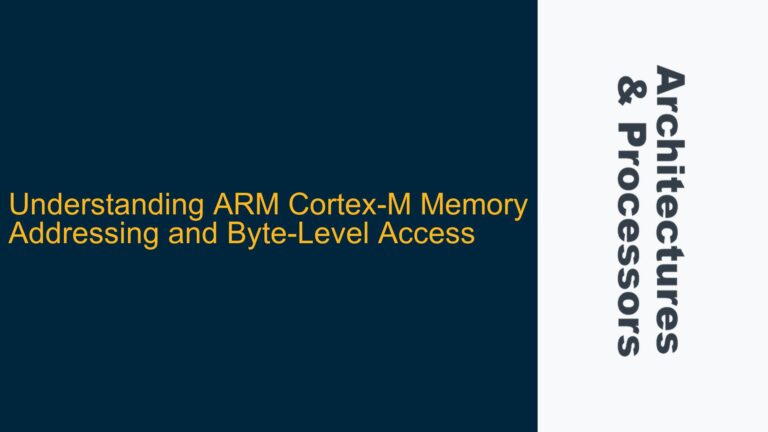Exception Handling Timing and Instruction Interruptibility in ARMv7-M
The ARMv7-M architecture, widely used in Cortex-M series processors, implements a sophisticated exception handling mechanism that is critical for real-time embedded systems. A key aspect of this mechanism is determining when exceptions are taken into account relative to the instruction flow. Exceptions in ARMv7-M can be either synchronous or asynchronous. Synchronous exceptions are triggered directly by the execution of instructions, such as undefined instructions or memory access faults. Asynchronous exceptions, on the other hand, are typically triggered by external events, such as interrupts from peripherals.
The timing of when an exception is serviced depends on the nature of the exception and the current state of the processor. For synchronous exceptions, the exception is taken immediately after the instruction that caused the exception completes. This ensures that the processor state is consistent and can be saved correctly. For asynchronous exceptions, the situation is more complex. The processor must first complete the current instruction before it can service the exception. This is because interrupting an instruction midway could leave the processor in an inconsistent state, making it difficult to resume execution later.
However, not all instructions are treated equally when it comes to interruptibility. Some instructions, particularly those involving multiple memory accesses like Load Multiple (LDM) and Store Multiple (STM), can be interrupted and restarted. This is crucial for maintaining low interrupt latency in real-time systems. The ARMv7-M architecture allows these instructions to be abandoned mid-execution if a higher-priority exception occurs. The processor saves enough state information to allow the instruction to be restarted after the exception handler completes.
The ability to interrupt and restart instructions is closely tied to the memory attributes of the accessed memory regions. Memory accesses to Normal memory can typically be interrupted and restarted without issues. However, accesses to Device or Strongly-ordered memory regions are more restrictive. These regions often correspond to memory-mapped peripherals, where the order and atomicity of accesses are critical. Interrupting an access to such regions could lead to inconsistent peripheral states or data corruption. Therefore, the ARMv7-M architecture ensures that accesses to Device or Strongly-ordered memory regions are not interrupted.
Memory Access Instructions and Exception Handling Behavior
Memory access instructions in ARMv7-M, particularly LDM and STM, exhibit unique behavior when it comes to exception handling. These instructions perform multiple memory accesses in a single instruction, which can take multiple cycles to complete. The ARMv7-M architecture provides flexibility in how these instructions interact with exceptions through the Configuration and Control Register (CCR). The CCR includes a DISMCYCINT bit that controls whether LDM and STM instructions can be interrupted.
When DISMCYCINT is set to 0, LDM and STM instructions can be interrupted by higher-priority exceptions. This reduces interrupt latency but requires the processor to save enough state to restart the instruction later. The Execution Program Status Register (EPSR) contains the IT (If-Then) and T (Thumb) bits, which are used to track the state of interruptible instructions. When an exception occurs during an LDM or STM instruction, the processor saves the current state, including the address of the next memory access, in the exception stack frame. After the exception handler completes, the processor uses this saved state to restart the interrupted instruction.
If DISMCYCINT is set to 1, LDM and STM instructions cannot be interrupted. This increases interrupt latency but simplifies exception handling, as the processor does not need to save and restore the state of partially completed instructions. This setting is often used in systems where low interrupt latency is not critical, or where the additional complexity of handling interruptible instructions is undesirable.
The behavior of memory access instructions is also influenced by the memory attributes of the accessed regions. Accesses to Normal memory can typically be interrupted and restarted without issues. However, accesses to Device or Strongly-ordered memory regions are more restrictive. These regions often correspond to memory-mapped peripherals, where the order and atomicity of accesses are critical. Interrupting an access to such regions could lead to inconsistent peripheral states or data corruption. Therefore, the ARMv7-M architecture ensures that accesses to Device or Strongly-ordered memory regions are not interrupted.
Implementing Robust Exception Handling in ARMv7-M Systems
To implement robust exception handling in ARMv7-M systems, developers must carefully consider the interaction between exceptions and instruction execution. One of the first steps is to configure the CCR to control the interruptibility of LDM and STM instructions. In systems where low interrupt latency is critical, DISMCYCINT should be set to 0 to allow these instructions to be interrupted. However, this requires careful handling of the exception stack frame to ensure that interrupted instructions can be restarted correctly.
Developers must also be aware of the memory attributes of the regions accessed by their code. Accesses to Device or Strongly-ordered memory regions should be kept as short as possible to minimize the window during which exceptions cannot be taken. Where possible, these accesses should be performed using single memory access instructions rather than LDM or STM, as single accesses are less likely to be interrupted and are easier to handle in exception handlers.
Another important consideration is the prioritization of exceptions. The ARMv7-M architecture allows exceptions to be prioritized, with higher-priority exceptions able to interrupt lower-priority ones. This prioritization must be carefully managed to ensure that critical exceptions are handled promptly while still allowing lower-priority exceptions to be serviced in a timely manner. The Nested Vectored Interrupt Controller (NVIC) provides a flexible mechanism for configuring exception priorities, and developers should take full advantage of this to optimize their system’s exception handling.
Finally, developers should be aware of the potential for exceptions to occur during the exception entry sequence itself. This can happen if a fault occurs during the stacking of registers or if a higher-priority exception arrives while the processor is in the process of handling a lower-priority one. The ARMv7-M architecture includes mechanisms to handle these cases, but developers must ensure that their exception handlers are designed to cope with such scenarios. This may involve careful management of the exception stack and the use of techniques such as tail-chaining to minimize the overhead of handling nested exceptions.
In conclusion, the ARMv7-M architecture provides a powerful and flexible exception handling mechanism that is essential for real-time embedded systems. By understanding the interaction between exceptions and instruction execution, and by carefully configuring the processor’s exception handling features, developers can create systems that are both responsive and reliable. Whether dealing with synchronous or asynchronous exceptions, memory access instructions, or nested exceptions, a thorough understanding of the ARMv7-M exception model is key to successful system design.
